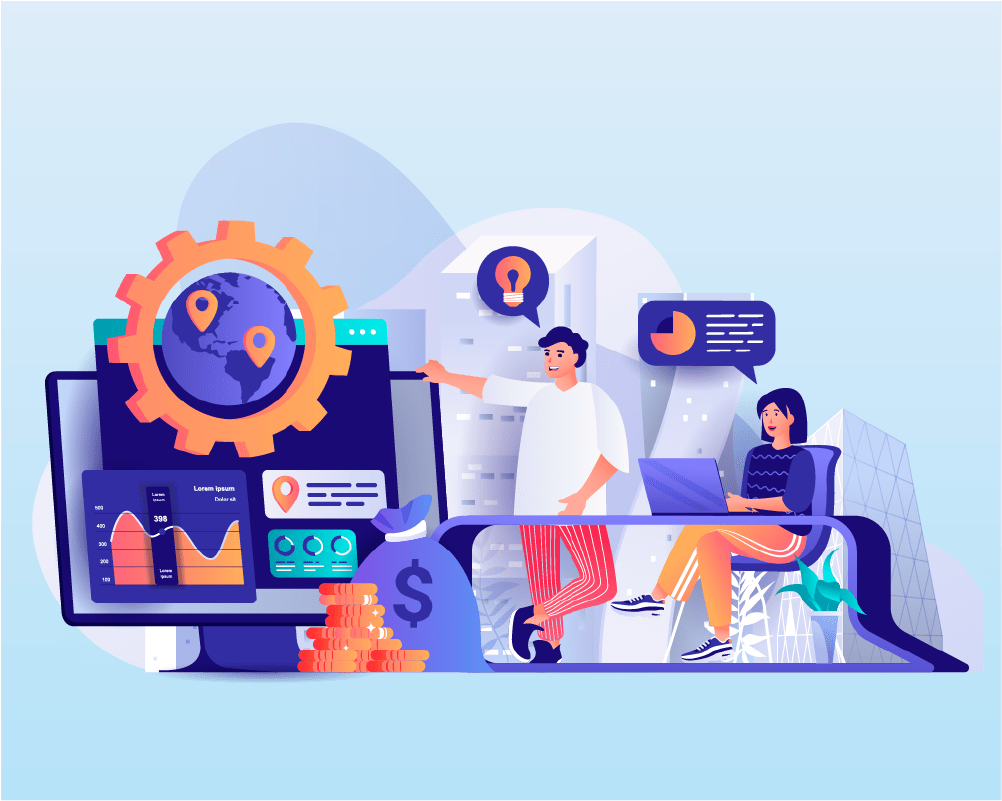October 21, 2021 By: Ankur Gupta
As businesses evolve and streamline their operations to remain competitive, certain emerging technologies are increasingly becoming an integral part of their toolkit. Hyperautomation is one such technology, featured in the no.1 spot on Gartner’s top technology trends of 2020. According to their 2021 report, ‘Forecast Analysis: Hyperautomation Enablement Software Worldwide’, organizations will reduce operational costs by 30% by combining hyperautomation technologies with redesigned operational processes.
While process automation today has become commonplace across industries, hyperautomation elevates the scope of possibilities for organizations to drive efficiencies. Hyperautomation involves a variety of cutting-edge technologies and strategies coming together like different sections of an orchestra, converging seamlessly and collaborating harmoniously to produce powerful end results. These technologies include robotic process automation (RPA), artificial intelligence (AI), machine learning (ML) and intelligent business process management (iBPMS). It also includes the focus of our blog today – cognitive process mining. It is an essential engine of hyperautomation, helping to generate actionable insights from retail to healthcare.
What is Cognitive Process Mining?
Companies across the world are now familiar with the idea of leveraging automation technology to streamline business processes. This reduces human error and improves efficiencies through technology-driven and data-led operations. However, the same human limitations that are countered by automation also apply to the very process of identifying business processes to automate. Cognitive biases, untrue assumptions and a lack of granular understanding of ground operations tend to cloud decision-making. Many processes are initially envisioned to work in an optimal manner but the reality of their day-to-day operations may be divergent from this ideal state. Cognitive process mining enables businesses and stakeholders to look beyond the ‘assumed processes’ and improve the real processes.
Cognitive process mining harnesses the abundance of event logs – the digital footprints generated by information systems throughout an organization and accumulated over time – to extract actionable insights and a wealth of useful information. This information is then filtered, processed and organized to capture every step of the processes involved and any deviations from their intended paths. This enables organizations to visualize business processes and their variations accurately and monitor them in real-time. Automated process discovery and mapping allow for unprecedented optimization of workflows.
The Benefits of Cognitive Process Mining
Process mining presents you with an X-ray of your operations. It offers you a completely objective and dynamic picture of the processes, capturing real-time information. The fact-based insights fuel analytics in order to improve productivity and output.
Process mining does not interfere with the day-to-day operations of your business in order to collect data. It works seamlessly to recover event logs across processes on an ongoing basis without the supervision required. This saves countless man-hours required to audit and map processes manually.
You will not only be able to identify process gaps but also translate them into the cost and ROI impact for your organization. For example, a supplier who is more cost-effective on paper may, in fact, be expensive in the long run due to inconsistencies in delivery. Process mining enables you to quantify how efficient these processes are, rather than relying on assumptions.
By giving you a dynamic and accurate real-time view of operations, you will know which processes need improvements and which do not. You will also know where to prioritize precious resources and energy to drive maximum ROI.
Not only does process mining result in significant cost savings in the long run by identifying efficiencies and enabling remediation, but the time-to-value it entails is also quick.
Applications of Process Mining
Process mining finds extensive use in common business processes that power a company’s day-to-day operations. Some common areas that can benefit from process mining are AP and AR processes in finance, inventory management processes, and order management processes. Process mining has also powered hyperautomation in industries like healthcare, retail and insurance.
Powering Hyperautomation in the Present and the Future
Gartner forecasts that the hyperautomation-enabling technology market will reach nearly $600 billion by 2022. By enabling the discovery and assessment of process gaps, process mining paves the way for hyperautomation, so that other technology can step in and remediate the issues automatically. Process-mining algorithms will only continue to get refined over time, improving the ability to capture deviations and process gaps across industries, maximizing the potential of hyperautomation as a truly game-changing technology.
To discover how JK Tech can leverage cognitive process mining and Hyperautomation to enhance the operations of your business, explore our Hyperautomation services.



